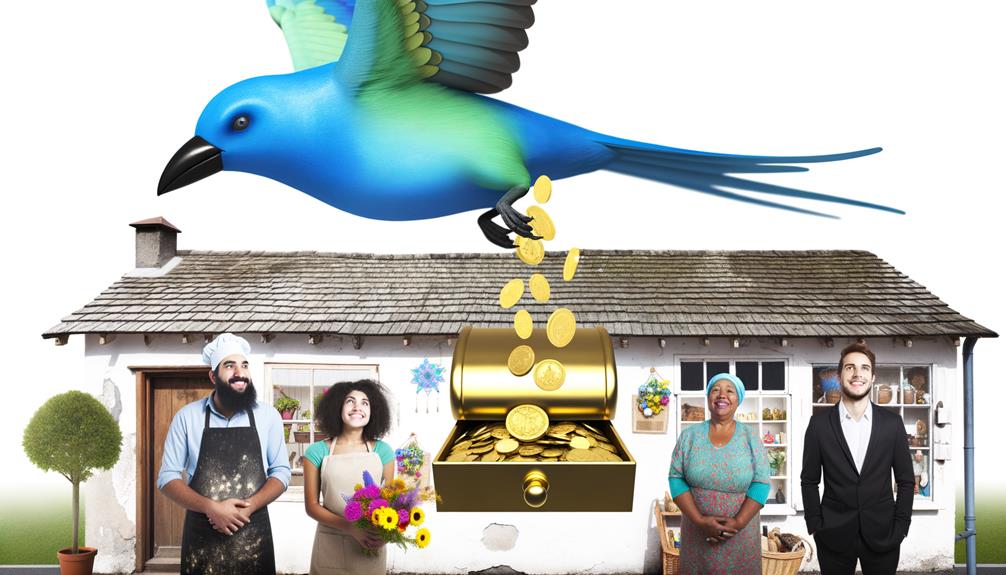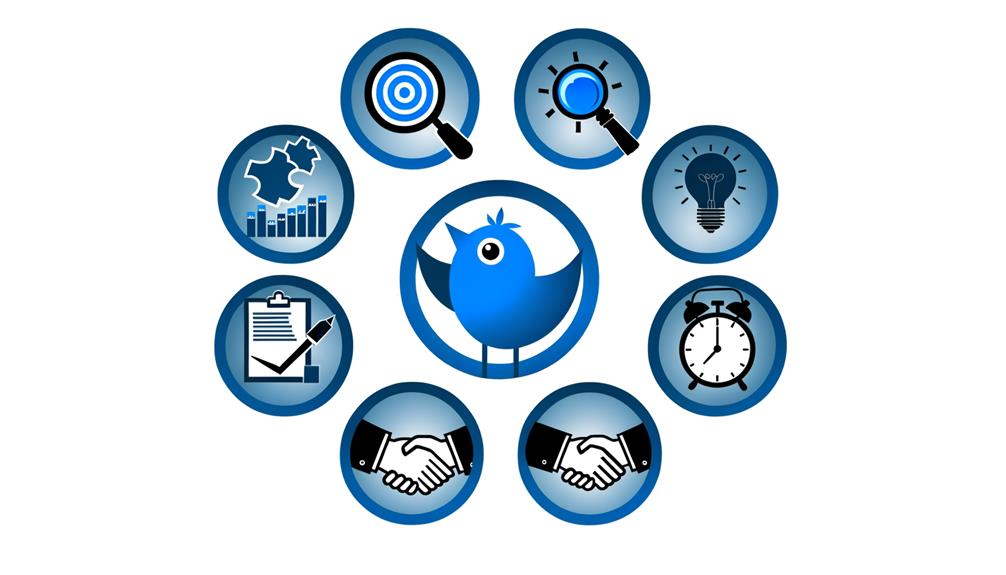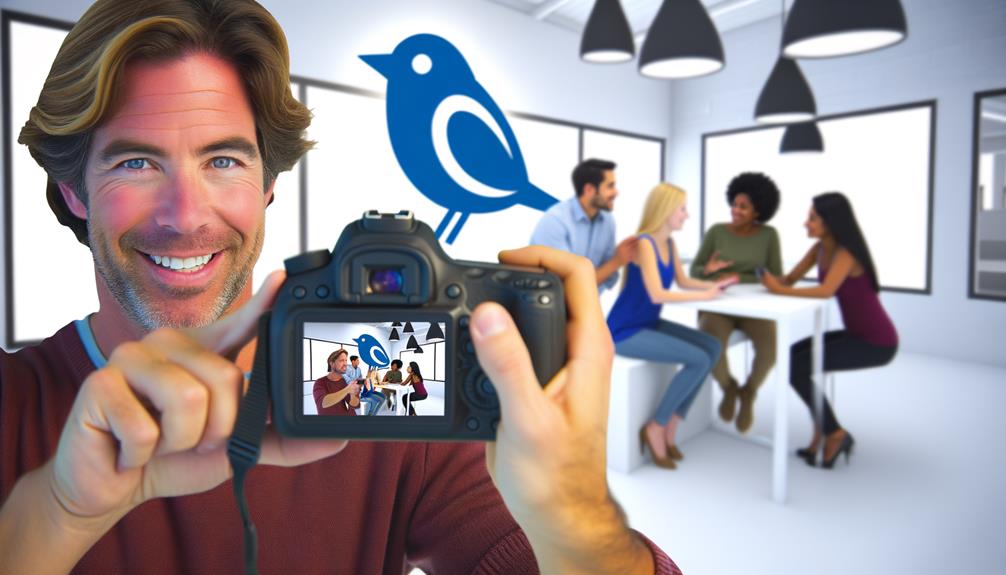No products in the cart.
As they say, success leaves clues, and you’re about to uncover some of the most intriguing ones from the world of Twitter marketing.
These 7 case studies, including giants like Nike’s #MakeItCount and smaller triumphs like Airbnb’s #LiveThere, illustrate not just the power of a well-crafted tweet but the strategic thought behind viral campaigns.
You’ll see how precision targeting, engaging content, and a splash of creativity can set the stage for remarkable brand engagement.
If you’re curious about the secret sauce behind these successes, you’re in the right place to find inspiration for your next campaign.
Key Takeaways
- Personalization and user engagement drive significant increases in brand loyalty and sales.
- Leveraging user-generated content fosters community and amplifies brand connection.
- Strategic social media campaigns can reshape industry standards and consumer behavior.
- Viral Twitter campaigns effectively boost brand visibility and consumer interaction.
Spotify’s Viral Playlist Drive
Spotify’s viral playlist drive captivated Gen Z and millennials, achieving a 50% surge in engagement through ingeniously personalized playlists. By targeting these demographics known for their craving for customization and authenticity, Spotify hit the jackpot. The secret sauce? Playlist personalization that resonated on a deeply personal level, enticing users not just to listen more, but to share their unique experiences on Twitter. This wasn’t just about listening to music; it was about showcasing individuality, and Spotify understood that perfectly.
The brilliance of leveraging trending hashtags can’t be understated. As users shared their personalized playlists, they tapped into organic reach that money can’t buy. Each tweet, each share, acted as a micro-ambassador for Spotify, expanding its visibility far beyond traditional marketing realms. This organic proliferation wasn’t just happenstance; it was a meticulously crafted strategy that harnessed the power of user engagement and turned it into a colossal wave of new users and, importantly, loyal fans.
In essence, Spotify’s campaign was a masterclass in understanding and leveraging digital behaviors. By intertwining playlist personalization with the natural desire to share, Spotify not only increased user engagement but set a benchmark for how to blend technology, personalization, and social sharing into a cohesive, impactful marketing strategy.
Nike’s #MakeItCount Challenge
You’re about to explore how Nike’s #MakeItCount Challenge not only set new benchmarks in digital marketing but also reshaped the way brands engage with their audience on Twitter.
By examining the campaign’s goals & strategy, you’ll understand the mechanics behind its viral success.
We’ll also highlight the key takeaways & results, showing you how impactful user engagements fueled a significant uptick in brand visibility and positive sentiment.
Campaign Goals & Strategy
Nike’s #MakeItCount Challenge wasn’t just about promoting their brand; it was a strategic move to inspire people to set, share, and achieve their fitness goals through the power of community and social media.
This initiative cleverly tapped into the universal desire for fitness inspiration and seamlessly intertwined it with the mechanisms of social media to create a vibrant, goal-setting culture.
By encouraging users to post their achievements with the hashtag #MakeItCount, Nike not only fostered a sense of brand engagement but also built a community bonded over shared aspirations.
This strategy wasn’t merely about selling products; it was about embedding Nike within the very fabric of people’s fitness journeys, making the brand synonymous with personal achievement and a healthy lifestyle.
Impactful User Engagements
Engaging users through the #MakeItCount challenge, the campaign sparked a wave of motivation across Twitter, as people eagerly shared their fitness milestones. Nike’s initiative not only promoted physical activity but also knit a tight-knit fitness community. This digital rally showcased:
- User-generated content: Countless workout photos and videos flooded Twitter, turning users into brand ambassadors.
- Community empowerment: The challenge fostered a supportive network, where encouragement and success stories amplified user motivation.
- Brand message amplification: By leveraging social sharing, Nike magnified its reach, intertwining its brand with the ideals of perseverance and wellness.
Analyzing the campaign, you see a brilliant strategy that not only engaged but also inspired, forming a vibrant community around fitness goals.
Key Takeaways & Results
Analyzing the #MakeItCount Challenge reveals key insights into how user-generated content and community engagement significantly boosted brand awareness for Nike. With over 16,000 responses, the results analysis underscores the campaign’s massive reach.
Engagement metrics further highlight the success, demonstrating how participants weren’t just passive observers but active contributors, sharing their fitness journeys and achievements. This strategy tapped into the power of social proof, as each shared experience echoed Nike’s commitment to motivating individuals.
The campaign’s genius lies in its ability to transform personal milestones into communal victories, fostering a sense of belonging and motivation. Ultimately, Nike didn’t just advertise a product; they cultivated a community, proving the unparalleled value of user-generated content in driving brand loyalty and engagement.
Airbnb’s #LiveThere Campaign
How did Airbnb’s #LiveThere campaign redefine the travel experience by emphasizing local living over typical tourist attractions? By steering away from the beaten path, Airbnb tapped into a desire for authenticity and community engagement, making every trip a unique exploration. The campaign wasn’t just about finding a place to stay; it was an invitation to inhabit destinations as locals do, transforming the way people perceive and engage with travel.
To paint a picture for the audience, consider the following:
- Local immersion experiences: Airbnb encouraged travelers to dive deep into the local culture, prompting a shift from sightseeing to living. This approach fostered a more meaningful connection with the destination.
- Community engagement: The campaign leveraged user-generated content to spotlight real stories of local engagement. This not only amplified the authenticity showcase but also provided genuine travel inspiration.
- Authenticity showcase: With over 250 million impressions and 5 million engagements, #LiveThere spotlighted the diversity of Airbnb’s accommodations and experiences, highlighting unique stays that offered more than just a bed to sleep in but a doorway into the essence of the locale.
Airbnb’s #LiveThere campaign didn’t just market a service; it sold an experience, a new way of seeing the world through the eyes of those who call it home.
Tesla’s Model Reveal Buzz
Just as Airbnb revolutionized travel through local living, Tesla’s Model Reveal on Twitter similarly transformed automotive promotion, creating unprecedented excitement and engagement. You’ve likely heard of the buzz it generated—over 500,000 likes and 200,000 retweets underline the massive impact of this campaign. But let’s dive deeper into how this was more than just numbers. Elon Musk, with his strategic tweets, didn’t just announce a product; he built a crescendo of anticipation that captured the audience’s imagination.
The Model X unveil event wasn’t simply a showcase of innovative features; it became a pivotal moment in automotive history, receiving widespread media coverage. This wasn’t by chance. The engagement around the event translated into increased brand visibility, drawing eyes from every corner of the globe to Tesla’s groundbreaking reveal.
What this campaign demonstrated was the sheer power of Twitter engagement in the automotive industry. It’s a testament to how a well-orchestrated social media campaign can elevate brand visibility to unprecedented levels. So, if you’re eyeing innovation, let Tesla’s Model Reveal be your muse. It’s clear proof that in today’s digital age, engagement translates into interest, catapulting brands into the spotlight.
Dove’s #SpeakBeautiful Movement
In the digital age where online negativity can overshadow positive discourse, Dove’s #SpeakBeautiful movement emerged as a beacon of positivity, encouraging users to counteract this trend by sharing uplifting messages about beauty on Twitter. This initiative wasn’t just about spreading kind words; it was a strategic effort to reshape the conversation around beauty standards, leveraging the power of social media for social empowerment.
Here’s how it unfolded:
- Partnership with Twitter: Dove teamed up with Twitter to sift through millions of tweets, gaining insights into how beauty is discussed online. This collaboration was key to understanding and subsequently shifting the narrative.
- Impactful Metrics: The results were telling. There was a 36% reduction in negative beauty tweets and a 30% uptick in positive conversations, proving that targeted, positive campaigns can indeed change the tone of online discourse.
- Community Building: Beyond numbers, Dove’s campaign fostered an online community that supported and uplifted each other, showcasing the role of social media as a tool for positive reinforcement and social empowerment.
You’ve seen it in action now – the power of a well-crafted campaign to not just market a product but to make a meaningful difference in people’s lives. Dove’s #SpeakBeautiful movement is a testament to that.
You’re about to explore how Coca-Cola’s #ShareACoke campaign not only personalized soda consumption but also significantly boosted sales and social media engagement.
We’ll analyze the strategic launch, its viral reach, and how it strengthened connections with consumers globally.
This journey highlights the power of innovative marketing in creating a buzz and forging deeper brand relationships.
Campaign Launch Strategy
By personalizing bottles with popular names, Coca-Cola’s #ShareACoke campaign launched with a strategy that immediately captivated consumers’ attention, driving unprecedented engagement and social sharing. Here’s how they did it:
- Influencer Partnerships & Unique Hashtags: Leveraging influencers across platforms to showcase their personalized Coke bottles sparked conversations, with unique hashtags amplifying the reach.
- Interactive Content: Coca-Cola encouraged users to share their #ShareACoke moments, transforming customers into brand ambassadors.
- Engagement Tactics: The campaign’s interactive nature, inviting users to find and share bottles with their names, created a personal connection, boosting brand loyalty and driving sales.
Analyzing this innovative approach reveals the power of personalization in engaging consumers, setting a benchmark for future campaigns.
Viral Impact Analysis
Exploring the #ShareACoke campaign’s launch strategy reveals its initial engagement success. Now, let’s examine its broader viral impact, showcasing how personalized connections fueled remarkable sales and social media milestones.
By incorporating consumers’ names on bottles, Coca-Cola didn’t just sell a drink; they sold an experience, leading to a 2% uplift in U.S. sales and a significant global sales increase. The campaign’s genius lay in leveraging engagement metrics and content creation, evidenced by over 500,000 photos shared by consumers on social media.
This user-generated content phenomenon not only spiked Coca-Cola’s Facebook traffic by 870% but also marked a 7% consumption surge among young adults. Here, Coca-Cola’s strategy exemplifies how innovative engagement can transform brand perception and performance.
Brand Connection Strengthening
Delving into Coca-Cola’s #ShareACoke campaign, it’s clear that personalization was key in strengthening the brand’s connection with its audience. Here’s how they did it:
- Personalized Messaging: By customizing Coke bottles with popular names, Coca-Cola turned ordinary products into unique, shareable experiences.
- Emotional Connections: The sense of ownership and the personal touch fostered deeper emotional ties between consumers and the brand.
- Engagement Amplification: With over 500,000 social media photos shared and 235,000 tweets, the campaign created a buzz that not only increased brand visibility but also boosted sales significantly.
Coca-Cola’s #ShareACoke journey underscores the power of personalized messaging in creating emotional connections and driving consumer engagement, setting a benchmark for innovative brand connection strategies.
GoPro’s User-Generated Showcase
GoPro’s campaign masterfully transformed everyday adventurers into storytellers, showcasing real-life moments through the lenses of their cameras. By inviting customers to share their adventure testimonials and highlight camera authenticity, GoPro tapped into a rich vein of authentic experiences. This wasn’t just marketing; it was an invitation to be part of a global narrative, where each clip and photo added to a mosaic of human endeavor and beauty.
The campaign’s genius lay not just in the breathtaking landscapes and heart-pounding action it captured but in how it fostered community engagement. GoPro users didn’t just see themselves as customers but as contributors to a larger story, one where every jump, dive, and sunset held a place. This sense of belonging was amplified through social sharing, turning personal moments into communal celebrations of adventure and creativity.
Frequently Asked Questions
What Is an Example of a Successful Twitter Campaign?
You’re seeking a standout Twitter campaign? Think Oreo’s Super Bowl blackout tweet. Its creativity and hashtag impact amassed over 10k retweets in an hour, demonstrating how timely, clever engagement can significantly magnify a brand’s presence.
What Is a Twitter Campaign?
A Twitter campaign’s your strategic push on Twitter to hit precise goals through engaging content and audience interaction. It’s about crafting messages that resonate, targeting effectively, and analyzing campaign metrics to boost audience engagement.
How Did Twitter Become Successful?
Twitter’s success stems from its platform evolution, focusing on real-time conversations and a concise communication style, which boosted user engagement. Features like hashtags and Retweets fostered a unique, interactive environment for innovation-hungry audiences.
What Is the Best Business Use Case for Twitter?
The best business use case for Twitter is boosting customer engagement and brand awareness. By creatively leveraging tweets, you’ll connect directly with your audience, fostering a community that drives both loyalty and innovative outcomes.
Conclusion
You’ve seen how giants like Spotify, Nike, and Tesla harness Twitter to turn creative sparks into wildfire campaigns. It’s about striking the chord that resonates with your audience—whether through personalized playlists, empowering hashtags, or awe-inspiring product reveals.
Your brand’s success on Twitter doesn’t hinge on luck; it’s the result of strategic creativity, data-driven insights, and genuine engagement. Take a leaf from these campaigns; blend innovation with authenticity, and watch your brand narrative thrive in the bustling Twitterverse.






